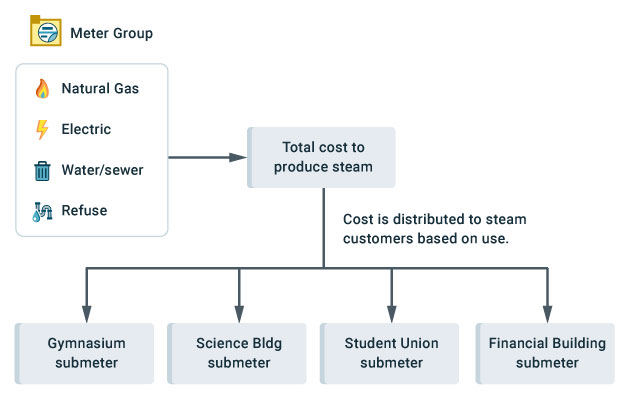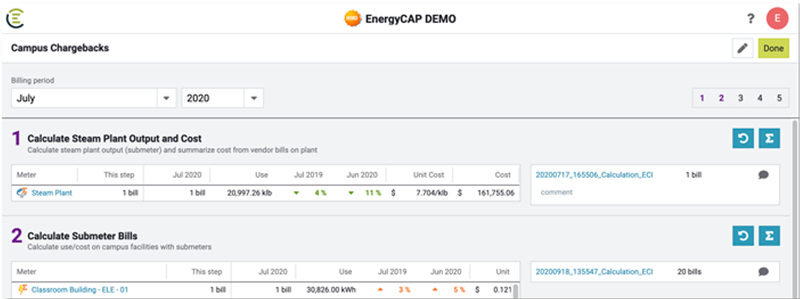This blog post was updated on May 20, 2021.
A campus chargeback is the allocation of campus-generated utility usage and cost to individual buildings that are served by the “in-house” system (Video). Other names for chargebacks include the following: allocations, rebillings, or distributions. In essence, the Facilities Management department is the local utility vendor.
Doing chargebacks can be complicated, so let’s look at the benefits. Here are eight ways campus chargebacks are useful.
1. Allocate costs to “general” and “auxiliary” budgets
Often in higher education, there are multiple budgets. For example, the general and education budget may provide classrooms, while auxiliary budgets might provide dining halls, dormitories, athletic facilities, or federally funded research labs. Usually, activities from auxiliary budgets are self-supporting—they have to pay their own way from the fees they collect. For this reason, it’s important to allocate costs to properly charge them for their use and their costs.

2. ENERGY STAR ratings for individual buildings
ENERGY STAR building ratings are valuable for many reasons. In order to receive a rating on an individual building, you need to know the consumption for the individual building. Unless you have a way to allocate the usage, you can’t answer that question.
3. Mandatory (legislated) energy usage reporting
Legislation by city governments, state governments, and other governing bodies is increasing around the country requiring certain types of buildings to report their energy usage. You can’t report your usage if you don’t know what it is.
4. Measurement & Verification of energy reduction projects
Calculating the measurement and verification of energy savings requires the usage data so you can compare the baseline or the pre-retrofit with the post retrofit.
5. Energy reduction competitions
Competitions like dorm versus dorm for energy reductions are popular on college campuses, but unless you have the energy data, you can’t name a winner.
6. Building energy/sustainability dashboards
Equally popular are energy or sustainability dashboards that show key performance indicators. Perhaps in kiosks or large monitors in building lobbies, dashboards show in real-time or near real-time how much energy the building is using.
7. Allocation of line loss (expense and use)
Often the institution needs to account for the total output if they have a central plant that is generating their own electricity, steam, or chilled water. They know how much is being sent to the grid, but the breakdown per individual building is unknown. If there’s line loss or unmetered loads, it needs to be accounted for.

8. Allocation of expenses related to central plant energy generation
Similar to allocating expenses related to central plant energy generation, you expect to see some campuses that have privatized their central energy plant, so for instance, the central heating plant is no longer owned by the institution. Instead, it’s owned by a private company that operates it for a profit. Cost accounting becomes very important in this situation.
 Best-in-class portfolio-level energy and utility bill data management and reporting.
Best-in-class portfolio-level energy and utility bill data management and reporting.
 Real-time energy and sustainability analytics for high-performance, net-zero buildings.
Real-time energy and sustainability analytics for high-performance, net-zero buildings.
 A holistic view of financial-grade scope 1, 2, and 3 carbon emissions data across your entire business.
A holistic view of financial-grade scope 1, 2, and 3 carbon emissions data across your entire business.
 Energy and sustainability benchmarking compliance software designed for utilities.
Energy and sustainability benchmarking compliance software designed for utilities.




